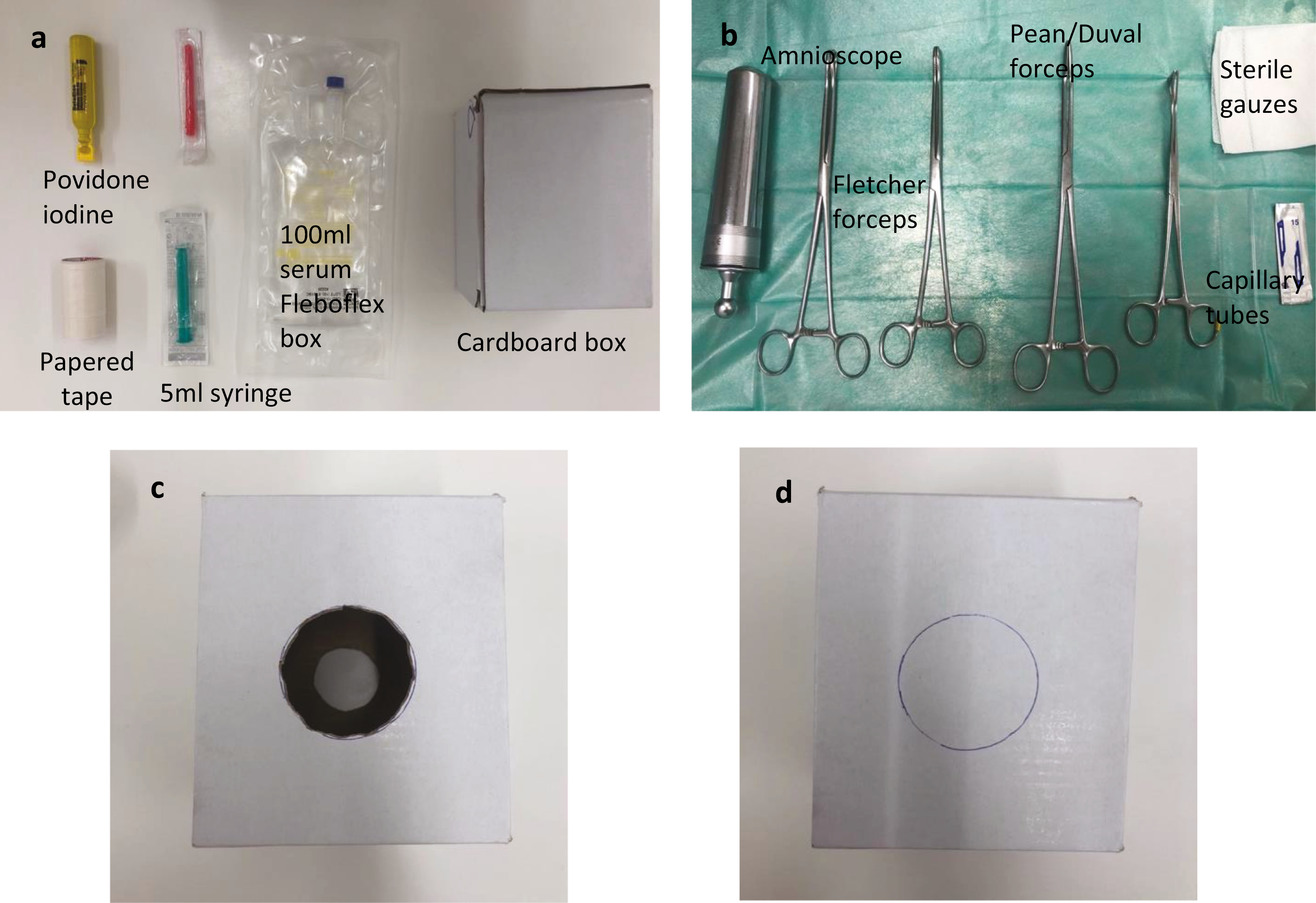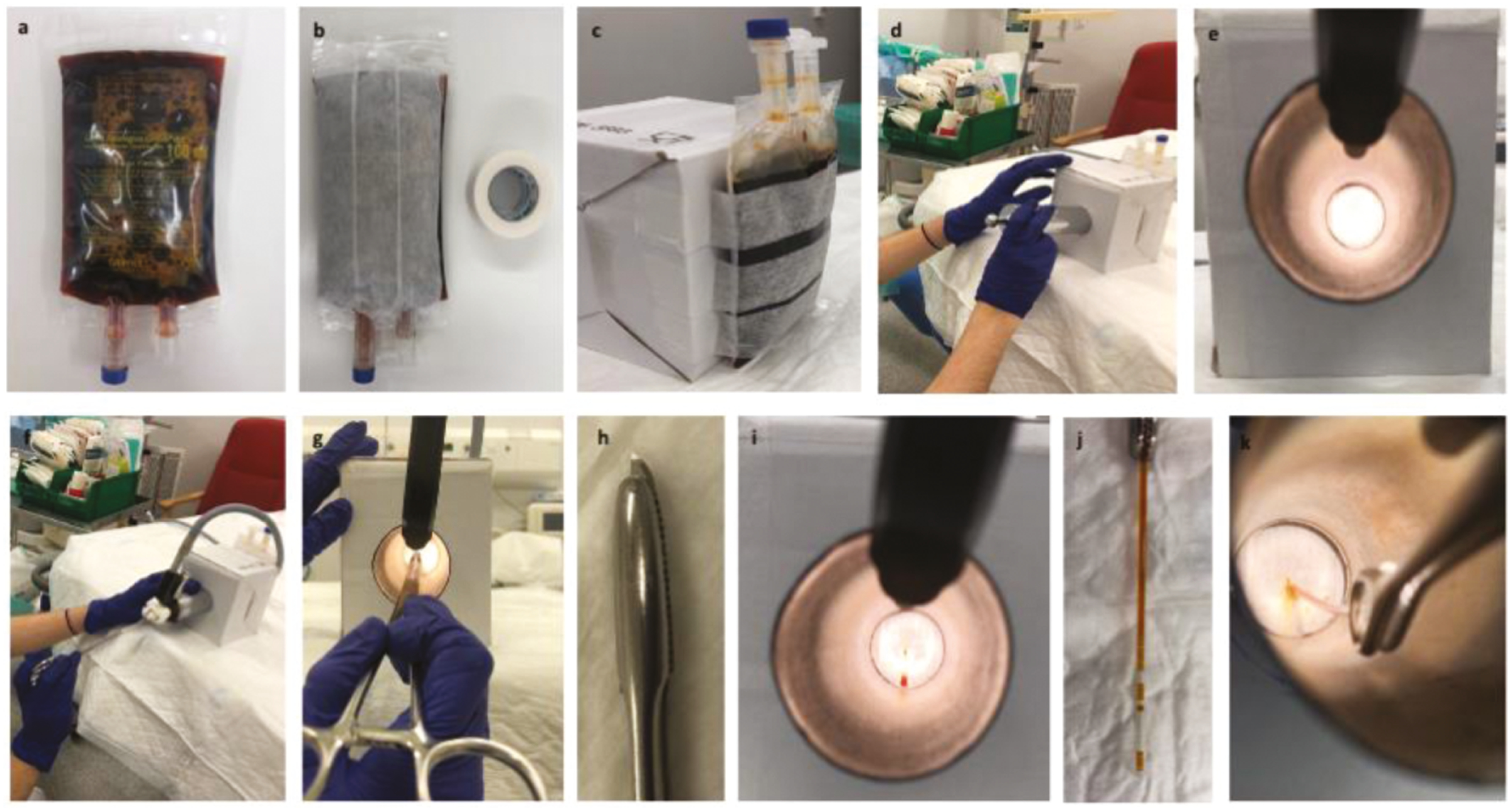
Fetal blood scalp sampling (FBS) is a critical obstetrical procedure used to assess intrapartum fetal well-being. Unfortunately, standardized task trainers for training Obstetrics and Gynecology (OB-GYN) residents in this technique are currently lacking. In response to this gap, we present a cost-effective task trainer designed to assist trainees in mastering the art of performing FBS.
We provide a step-by-step guideline for the development of a cost-effective task trainer tailored for simulating FBS. Six OB-GYN residents underwent a structured theoretical session followed by practical training with the task trainer. Pre- and post-training questionnaires were administered to evaluate the simulator’s efficacy as an educational tool.
All participants acknowledged the task trainer’s efficacy in enhancing their understanding of the procedure, resulting in elevated knowledge and confidence across all assessed aspects. Furthermore, every participant endorsed the training for fellow trainees and “agreed or strongly agreed” that the simulator faithfully replicated the procedural experience.
This low-cost simulation model for FBS is a valuable training tool with high acceptance and satisfaction rates among participants. Its use has the potential to improve patient safety and increases participants confidence in performing the procedure.
Cardiotocography (CTG) is commonly used for assessing fetal well-being during labour in developed countries, but it has limitations, including a high false-positive rate of 60% [1]. Subjective interpretation of CTG results leads to significant intra-observer variability [2]. To address the need for more objective fetal well-being assessment, many obstetric scientific societies recommend pH or lactate measurement through fetal scalp blood sampling (FBS) in cases of non-reassuring CTG [3].
Opportunities for training in FBS are scarce, leaving many Obstetrics and Gynaecology (OB-GYN) residents lacking the necessary skills. Simulation-based learning offers a valuable approach to acquire competence by combining theoretical knowledge with practical skills in a controlled setting [4]. Simulators vary in cost, fidelity and modality, providing a range of options for training. Interestingly, high-fidelity simulators, although more expensive, do not consistently outperform their low-fidelity counterparts [5].
While medical simulations are highly beneficial for medical education, their production and validation can be expensive. To the best of our knowledge, there are no published simulators for training the performance of FBS. In response, we have developed an affordable, low-fidelity FBS task trainer and present preliminary results from six OB-GYN residents.
The decision to create a low-cost, low-fidelity FBS task trainer aimed to facilitate immediate and accessible residents’ training in the delivery room and to eliminate the dependency on external resources. We designed an affordable set-up using readily available materials in the delivery room to replicate crucial FBS elements.
We have designed an affordable, low-fidelity FBS task trainer, specifically tailored for honing the essential skills required to perform FBS in a controlled environment. The task trainer can be assembled in under 15 minutes using readily available and low-cost materials (Figure 1A and B):


(a and b) Material for the construction of the task trainer.


(a-k) Assembly of the task trainer and steps for simulating fetal scalp blood sampling procedure.
Once assembled, the task trainer facilitates the structured practice of the fetal blood scalp sampling technique:
a) Place the task trainer on a level surface.
b) Insert the amnioscope into the prepared aperture with sufficient illumination (Figure 2D).
c) Use the amnioscope to view the simulated ‘fetal scalp’ (Figure 2E).
d) Cleanse the ‘fetal scalp’ with sterile gauze and sponge-holding forceps (Figure 2F).
e) Apply paraffin gently to the ‘fetal scalp (Table 1)’.
f) Make a 2-mm incision on the ‘fetal scalp’ using a No. 15 scalpel blade and Fletcher forceps, with steady pressure (Figure 2G and H).
g) Observe simulated ‘blood’ from the incision (Figure 2I).
h) Collect the simulated ‘blood’ with a capillary tube held by sponge-holding forceps (Figure 2J and K).
i) Apply slight pressure on the incision with a dry swab until ‘bleeding’ stops.
In this pilot study, six OB-GYN residents from Sant Joan University Hospital in Reus (Spain) were involved. The educational goals were to (1) know the necessary materials for FBS, (2) demonstrate safe FBS sampling, (3) recognize common FBS challenges and prevention strategies, and (4) identify and manage potential complications.
Participants began with a pre-assessment questionnaire rating their knowledge and confidence in various aspects of FBS using a Likert scale.
After the questionnaire, participants attended a lecture on FBS indications, materials, techniques, complications and management, followed by simulator training. During the simulation, residents received individual instruction and performed FBS under faculty supervision.
Post-training, participants completed the same questionnaire and a survey, rating their experience and the simulator’s effectiveness using a 5-point Likert scale for four statements (Table 2).
Six participants, all with limited prior FBS experience, initially lacked confidence in the procedure, rating themselves ‘very unconfident’ (mean Likert-scale value of 1)in most aspects, except one who felt ‘somewhat confident’ regarding potential complications (Likert scale value of 3). All participants felt untrained in the technique.
After the workshop, participants reported increased confidence. They felt more at ease with the materials and steps (mean Likert-scale values of 5 and 4.1, respectively) and performing the scalp incision (mean value of 3.6 on the Likert scale). Participants also reported improved knowledge about potential complications and their management (mean values of 4 and 3.3, respectively).
All participants strongly agreed that the simulator-based training was beneficial. They found the simulator’s realism suitable for the purpose and believed it could enhance their FBS skills. They recommended the training to colleagues to improve their skills.
Our study introduces an affordable FBS task trainer, addressing training gaps for OB-GYN residents. It provides an important foundation for institutions aiming to implement similar, cost-effective training programmes. To ensure its reliability and practicality, future steps include rigorous testing, benchmarking against established standards, and assessing fidelity and realism. Ongoing success may necessitate design updates, technology integration and addressing any identified limitations during validation.

| 1. Knowledge of the materials required for FBS. |
| 2. Familiarity with the steps to perform FBS. |
| 3. Confidence in performing the scalp incision. |
| 4. Ability to collect blood with a capillary tube. |
| 5. Awareness of potential FBS complications. |
| 6. Knowledge of how to manage complications. |
| 7. Confidence in performing FBS. |
| 8. Need for additional FBS training. |

| 1. Overall, I found this simulator-based training to be valuable. |
| 2. I believe the simulator can enhance my FBS skills. |
| 3. The simulator's realism is adequate for its purpose. |
| 4. I would recommend this training to my colleagues and junior residents to enhance their daily practice skills. |
None.
None declared.
The authors have not received financial support to carry out the article.
None declared.
The authors declare that for this research no experiments have been carried out on humans or animals.
None declared.
1.
2.
3.
4.
5.